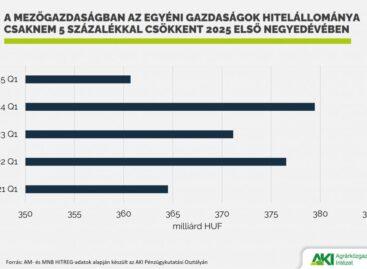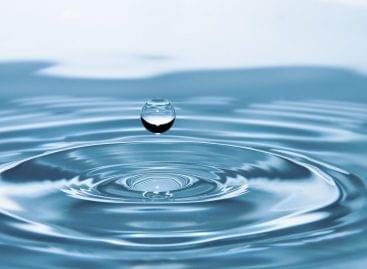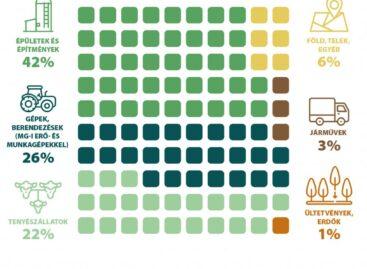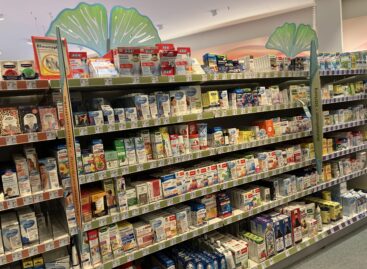A balanced harvest is expected this year on domestic plum orchards
However, based on the overview of NAK and FruitVeB, a normal, balanced harvest can still be expected, compared to the average of the last 4 years, we can count on a more favorable harvest volume.
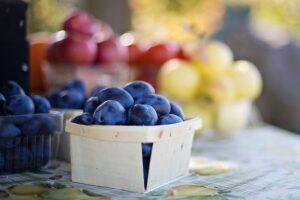
(Photo: Pixabay)
In Hungary, plums were produced on approximately 5,776 hectares in 2024, which shows a slight decrease compared to the data of 2023. Our county with the largest production area is the county of Szabolcs-Szatmár-Bereg, where almost 30% of the plum-growing surface is currently located. The counties of Bács-Kiskun and Pest also have significant cultivation areas, together they account for more than 60% of the total cultivation area.
As a result of frost damage and cold effects caused by the changeable weather occurring nationwide, a higher than usual amount of fruit drop was observed
However, based on the overview of NAK and FruitVeB, a normal, balanced harvest can still be expected, compared to the average of the last 4 years, we can count on a more favorable harvest volume. In the past 4 years, an average of around 45,000 tons of plums were harvested on domestic plantations, and in 2020, the season ended with a particularly low plum yield (24,000 tons). On the other hand, in 2022, the amount of all crops exceeded 60,000 tons. The last few years have apparently not been favorable to plums – spring frosts, the coldness of flowers, the absence of bees, and poor fertility cause increasingly large fluctuations in yields, so both the harvest and the market have become unpredictable. According to the joint overview of the National Chamber of Agriculture and the Hungarian Fruit and Vegetable Association (FruitVeB), this year’s domestic harvest will probably be between 50,000 and 60,000 tons, so this year we can approach the harvest of better vintages. The exact estimation is made difficult by the fact that the crop is extremely heterogeneous both by growing area and by variety. The harvesting season, as with most of our fruit species, started about 2-2.5 weeks earlier. The biggest problem at the moment is drought and atmospheric drought, which inhibits the growth of plums; some sensitive varieties almost dry up on the tree. If the dry and hot weather continues, it may reduce the expected yield, even to a greater extent. The producers did not report any significant plant protection problems this year.
Plums are currently grown on approximately 5,776 hectares in Hungary
The cultivated area is constantly decreasing: ten years ago we still had nearly 8,000 hectares. There are 1,654 hectares of plum plantations in the county of Szabolcs-Szatmár-Bereg, the counties of Borsod-Abaúj-Zemplén, Heves and Jász-Nagykun-Szolnok provide another 895 hectares. With this, North-Eastern Hungary has 40-45 percent of the cultivated area. Plums are grown on 1,180 hectares in the county of Bács-Kiskun, while the production area in the county of Pest is 897 hectares, so the central part of the country accounts for more than a third of the production area. Varieties produced in the largest area include Katinka, Cacanska Lepotica, Cacanska Rana, Bluefree, Stanley, President and Top-series varieties. Most of the harvest goes to the processing industry (domestic or possibly foreign, the latter mainly German), and a small half is sold in the domestic and, to a lesser extent, foreign fresh market. Plums used to be an important export item In the years before 2020, we typically exported 8-12 thousand tons, but in the last three years (due to significant crop losses), the amount exported is limited to 2-4 thousand tons. Our plum imports are not significant, ranging from 1 to 2 thousand tons in the last five years. There is a lot to be done in terms of quality cultivation, which is partly the task of universities and research institutes, but the contribution and cooperation of the producers is also essential for the results that can be used in practice. The National Chamber of Agriculture and the Hungarian University of Agriculture and Life Sciences maintain a close relationship in the development of domestic fruit growing, in order to be able to pass on the most up-to-date scientific knowledge available to farmers in an understandable way. In the fruit research center in Cegléd, experiments are also carried out for practical purposes. The experts also reported on the observations achieved so far at the plum variety show held in Cegléd.
Plums are a real vitamin bomb: a natural source of vitamins A, B, C, E and K, high in antioxidants and minerals
Its vitamin and antioxidant content is not only important from the point of view of the prevention of cancer, but can also be an effective help against wrinkles, for example. Plums are also called the natural secret to slimness, because they not only help you lose weight effectively, but also prevent obesity due to their chlorogenic acid content. Nutritious fruit, which is an effective solution for anemia and iron deficiency, thus improving the well-being. Due to its 85% water content, the plum is a very good thirst quencher, and thanks to its fiber and sorbitol content, it is a well-known laxative. Some types of plum have a particularly strong laxative effect, so be aware of this. One or two handfuls of fresh or prunes a day move the bowels and promote the elimination of waste products. If eaten raw, choose the ripest, sweetest pieces. Soft and overripe fruits with a higher sugar content are used for jam and plum brandy. Less ripe plums are better for pickles and meats. Plums last a relatively long time in the refrigerator and are an excellent fruit for freezing.
NAK/FruitWeb
Related news
Agricultural loans decreased by 6 percent
Agricultural loans decreased by 6.0 percent to HUF 1,001.2 billion…
Read more >Agriculture’s income-generating capacity may depend on irrigation
Europe is facing an increasingly significant water shortage, so agriculture’s…
Read more >42 percent of agricultural investments were spent on buildings and structures in 2024
According to preliminary data from the Central Statistical Office, the…
Read more >Related news
WHO: They urge a 50 percent price increase for tobacco, alcohol and sugary drinks
The World Health Organization (WHO) is calling for the prices…
Read more >Eurozone economic growth accelerated in June
The eurozone’s economic performance accelerated in June, according to the…
Read more >This is how drug prices are changing: the government introduced price restrictions
The Ministry of National Economy’s price restrictions on medicines came…
Read more >
